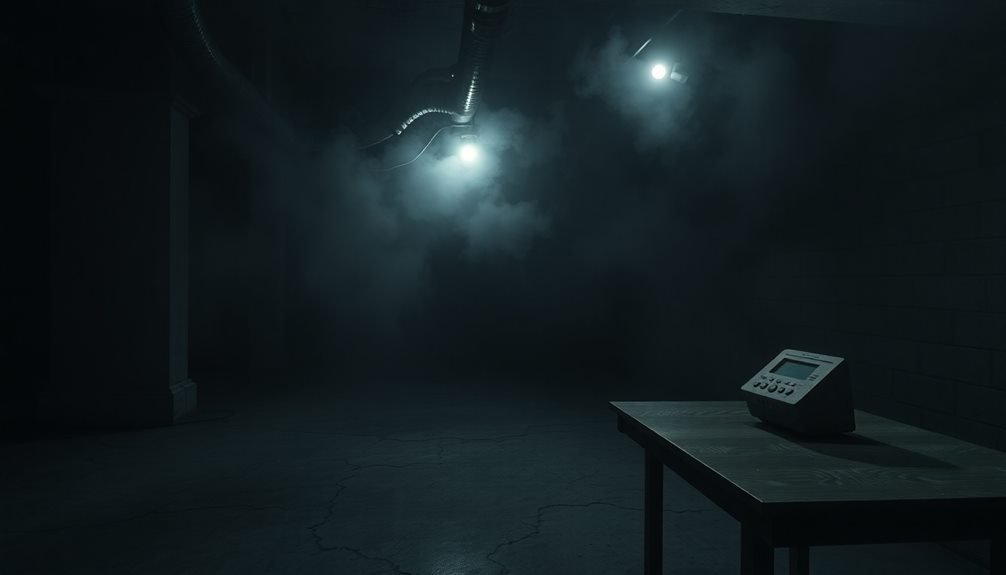Radon gas is completely odorless and colorless, which makes it tricky to detect in your home. It's formed from the natural decay of uranium in soil and rocks and seeps into buildings through cracks and gaps. Since it has no smell, you can't sense it, so specialized testing is essential for finding it. This invisible gas can be a hidden danger, as high levels pose health risks like lung cancer. So, being aware and testing your space is super important for keeping safe. Stick around, and you'll discover more about keeping your home radon-free!
Key Takeaways
- Radon gas is colorless and odorless, making it undetectable by human senses.
- It does not have a smell or taste, posing detection challenges.
- Specialized testing kits are required to identify radon presence in the environment.
- Radon forms from the decay of uranium in soil and rock, not from household activities.
- Awareness of radon's undetectable nature emphasizes the importance of regular testing for safety.
Introduction
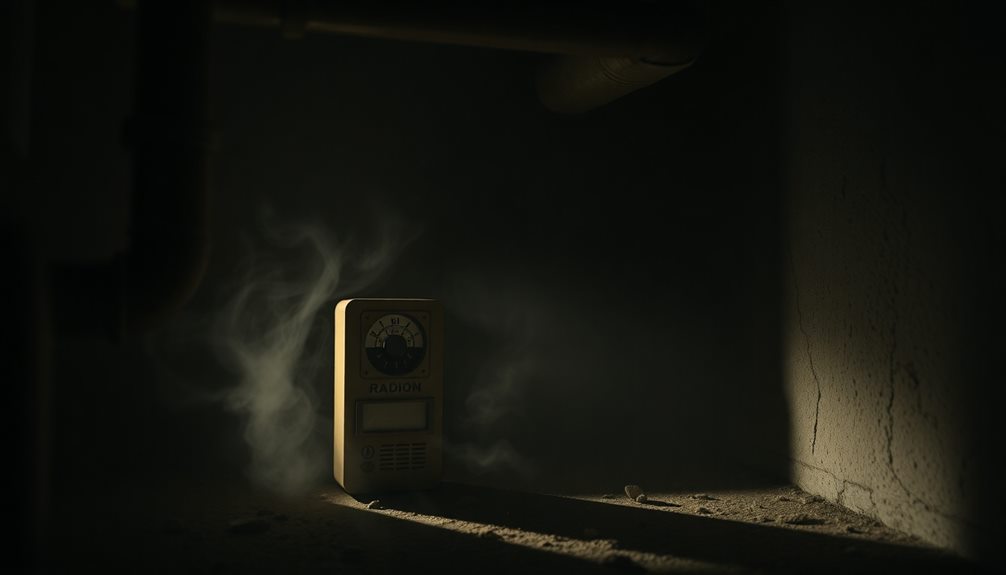
Radon gas is a colorless, odorless radioactive substance that can seep into homes and buildings from the ground. You mightn't even know it's there, but radon can pose serious health risks if left unchecked. It forms naturally from the decay of uranium in soil and rock, making it a common problem in many areas.
If you live in a region with high levels of uranium, you may be at greater risk of radon exposure.
You can't see or smell radon, which makes it tricky to detect. That's why it's essential to test your home for this invisible gas. Testing kits are available at hardware stores or online, and they're easy to use. Just place the kit in your home for a few days, send it off for analysis, and you'll get results.
If your levels are high, don't panic! There are solutions to reduce the radon in your home, and taking action can help keep you and your loved ones safe.
Being informed about radon gas is the first step. So, let's dive into the ways you can protect yourself and your family from this hidden danger!
Description of the Smell

Many people might wonder what radon gas smells like, but the truth is, it doesn't have a smell at all. Yes, you read that right! Radon is a colorless, odorless gas, which means you won't notice it in your home or anywhere else.
Imagine walking through a room and not detecting any scent, like being in a bubble of fresh air. This can be both comforting and concerning.
Since you can't smell it, radon isn't something you can easily detect with your senses. It's sneaky that way! Radon gas comes from the natural breakdown of uranium in soil, rock, and water.
Because it's invisible and odorless, the only way to know if it's present in your home is through testing. You might feel a bit uneasy thinking about it, but don't worry! Testing kits are easy to use and help keep you safe.
Source and Composition

Understanding radon gas starts with knowing its source and composition. Radon is a colorless, odorless gas that naturally forms when uranium in soil and rocks breaks down. You can find it in many places, often in homes and buildings, especially in areas rich in uranium. It's fascinating how something so tiny can have such a big impact!
When uranium decays, it produces radium, which then releases radon gas. This means that radon can seep into your house through cracks in the foundation, walls, or even through your water supply. Isn't it interesting to think about how this invisible gas travels from the earth right into your living space?
Radon is part of the noble gas family, which means it doesn't easily react with other elements. Because of this, it doesn't have a smell or taste, making it difficult to detect without special equipment.
This is why testing your home for radon is crucial. You can't see or smell it, but knowing about its source and composition helps you understand why keeping your living space safe from radon is so important. Stay informed and take action to protect yourself and your loved ones!
Typical Scenarios or Environments

Homes built on or near uranium-rich soil are often at a higher risk for radon exposure. You might be surprised to learn that radon can seep into your home through cracks in the foundation or gaps around pipes.
If you live in a basement or a house with poor ventilation, you're even more susceptible. In these scenarios, radon gas can accumulate, making it crucial to test your home.
Radon isn't confined to just residential areas; schools and workplaces can also be at risk. If you spend a lot of time in these environments, it's essential to ensure they're regularly tested.
Imagine sitting in a classroom or an office, unaware that radon gas might be floating around. That thought can be unsettling!
In rural areas, where homes are often built on rocky soil, the likelihood of radon exposure increases. Even if you think your home is safe, it's wise to check.
Testing for radon is simple and can help you feel secure. Remember, taking action now can protect you and your loved ones from potential health risks down the line.
Emotional or Cultural Associations
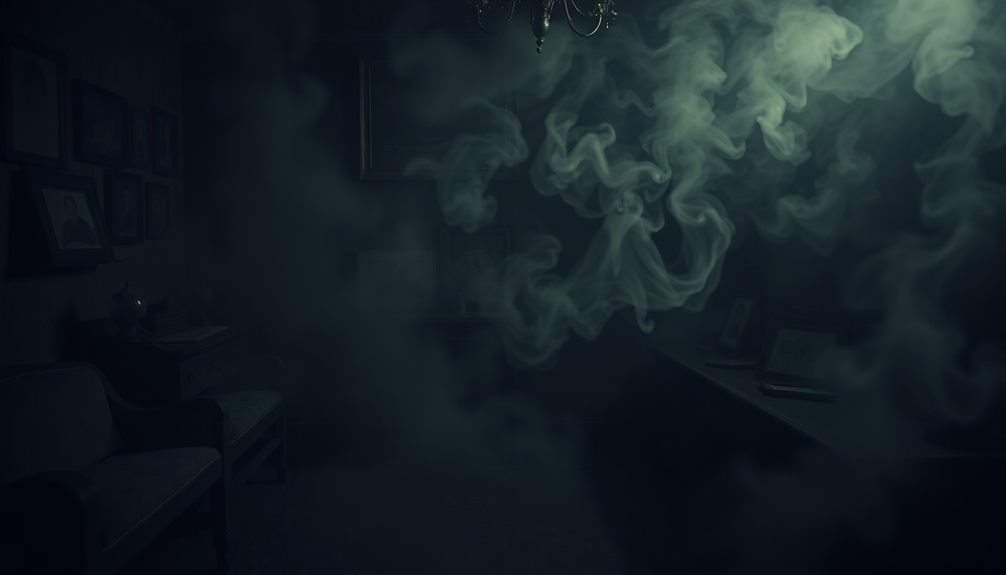
Radon's lurking presence can evoke a sense of unease for anyone aware of its health risks. You might imagine a shadowy figure hiding in your basement, silently threatening your family's well-being. This feeling can create an atmosphere of worry, especially for those who've heard stories about radon's dangers.
In many cultures, the idea of hidden dangers often relates to superstition or folklore. You may think of tales where unseen forces bring misfortune, making you feel anxious about what you can't see. This connection can deepen your concern about radon, as it represents the unknown lurking in your home.
Interestingly, radon doesn't just affect individual feelings; it can influence community discussions. When neighbors talk about radon testing, they often share stories of fear and relief. You might find yourself participating in these conversations, driven by the desire to protect your loved ones.
Ultimately, understanding radon's emotional and cultural associations helps paint a picture of its impact. It's not just a gas; it's a symbol of hidden threats that can stir up emotions and provoke action. Being informed can empower you to take control of your environment.
Health or Safety Considerations
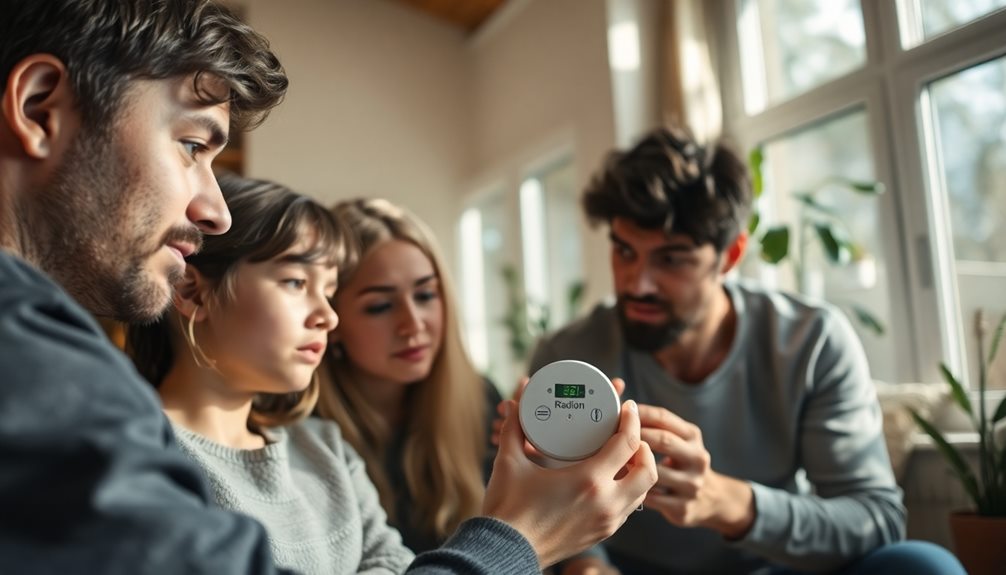
How can you ensure your family's safety from radon exposure? First, you need to understand that radon is a colorless, odorless gas that can seep into your home from the ground.
It's crucial to test for radon, as high levels can pose serious health risks, including lung cancer. You can purchase a radon test kit at a hardware store or hire a professional to measure levels in your home.
If you find elevated radon levels, don't panic! There are ways to fix this. Ventilation systems, sealing cracks in floors and walls, and using radon mitigation systems can significantly reduce radon levels.
Make sure you regularly test your home, especially if you've made changes like renovations or new construction.
It's also a good idea to check radon levels in your workplace, as you spend a lot of time there too.
Remember, keeping your family safe is a team effort! Share this information with your loved ones and encourage them to test their homes as well.
Final Thoughts
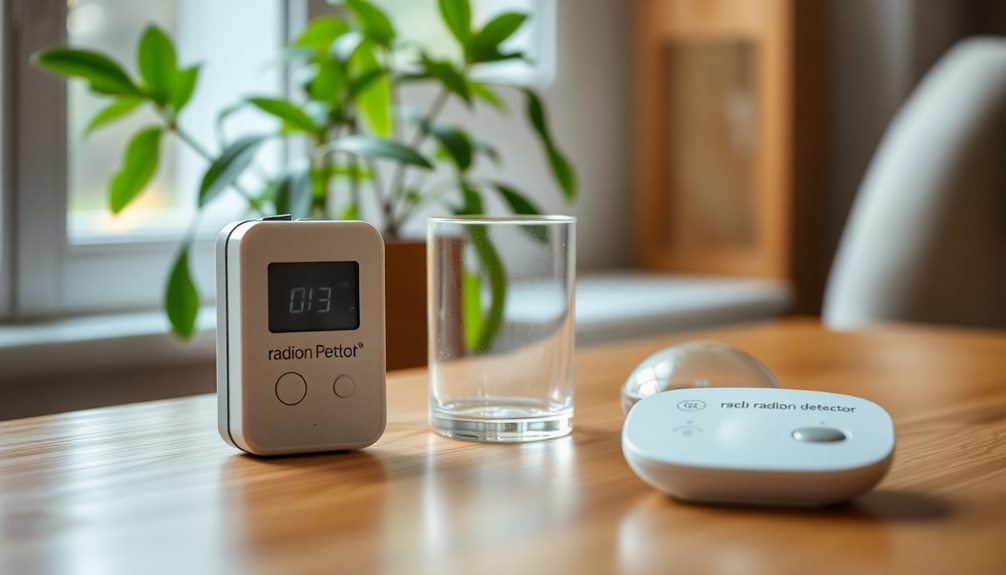
In light of the potential risks associated with radon exposure, taking action to ensure your family's safety is essential.
Radon gas is odorless and tasteless, which makes it tricky to detect. You can't rely on your senses, so testing your home is the best way to know if radon is a problem.
Consider investing in a radon test kit; they're easy to use and can provide peace of mind. If the results show high levels of radon, don't panic! There are effective methods to reduce radon levels in your home, such as ventilation systems.
By staying informed and proactive, you can help protect your loved ones from health risks linked to radon gas. Remember, knowledge is power. Educate yourself and your family about the dangers of radon, and share this information with friends and neighbors.
In the end, your home should be a safe sanctuary, free from harmful substances.
Frequently Asked Questions
Can Radon Gas Be Detected Using Household Smell Tests?
You can't rely on household smell tests to detect radon gas. It's odorless and tasteless, so specialized radon detectors or professional testing services are necessary to identify its presence in your home effectively.
Is Radon Gas Harmful if Undetected for Years?
Yes, radon gas can be harmful if undetected for years. It increases your risk of lung cancer, especially with long-term exposure. Testing your home regularly ensures you're protecting your health and reducing potential dangers.
How Does Radon Gas Compare to Other Hazardous Gases?
Radon gas is odorless and colorless, making it stealthy compared to other hazardous gases like carbon monoxide, which you can smell. Its long-term exposure risks are significant, so testing your home is crucial for safety.
Are There Specific Regions With Higher Radon Levels?
Yes, certain regions, particularly those with rocky or mountainous terrain, often have higher radon levels. If you live in such areas, it's wise to test your home for radon to ensure safety.
What Are the Long-Term Effects of Radon Exposure?
Long-term radon exposure increases your risk of lung cancer. You might not notice any immediate symptoms, but consistent inhalation can lead to serious health issues over time. Testing your home regularly can help ensure your safety.
